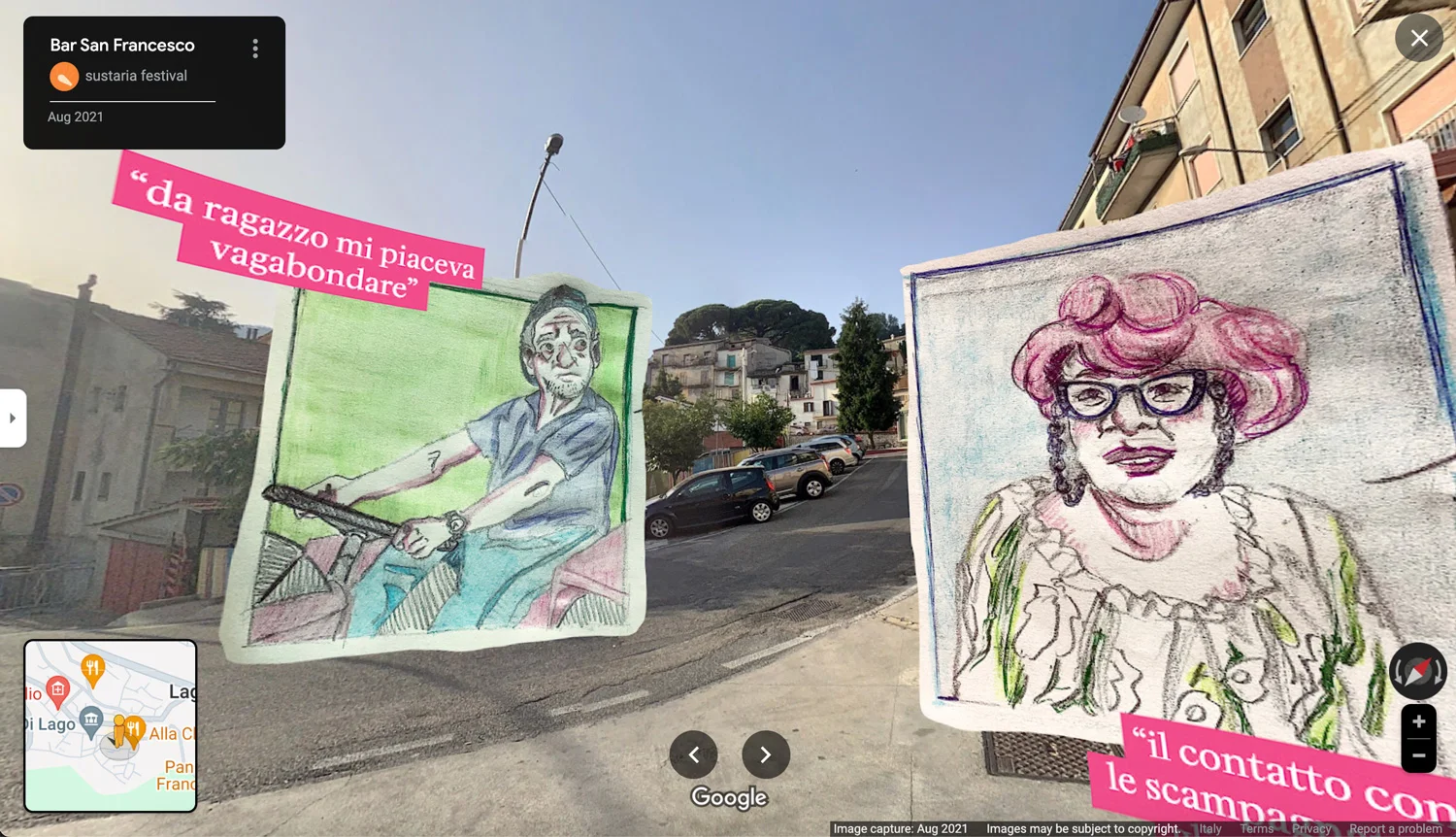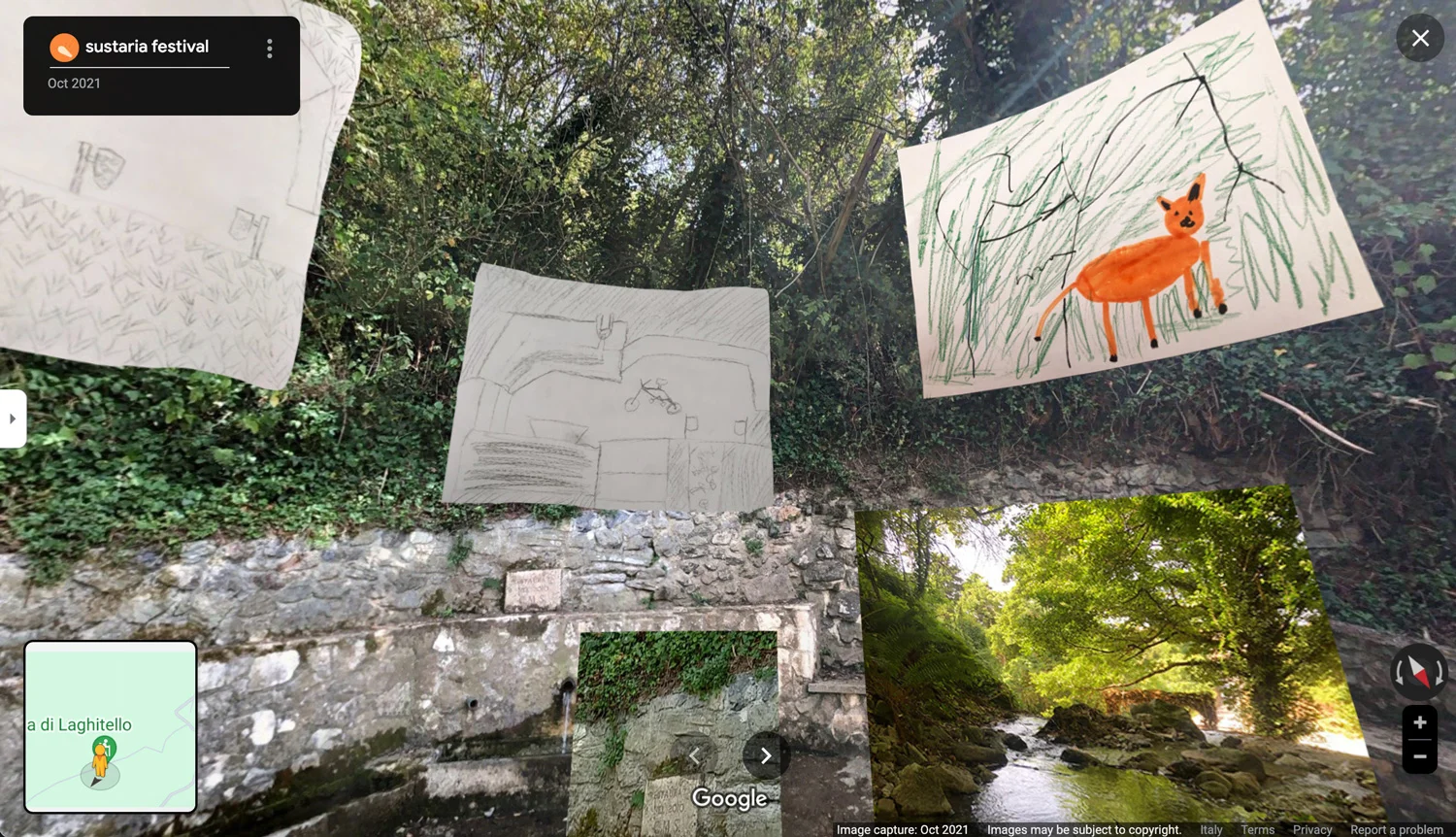Remapping Lago is a workshop around the themes of living archives, personal geographies, and urban mapping. Led in Lago (Calabria, Southern Italy) during the Sustarìa Festival 2021. The full outcome is publicly accessible on Google Maps.
- Analog Exploration Toolkit
- Adobe Photoshop
- Google Street View App
The context in which the workshop took place is Lago, a small town in the Calabrian hinterland, in which the consequences of a consolidated phenomenon of depopulation are manifested, widely shared throughout the national territory and in particular in Southern Italy. Lago, like many other towns, is also made up of stories, conflicts, memories, and little treasures to discover by talking to people. The question we asked ourselves is: how can we represent this town while preserving its vitality, restoring a subjective, complex but also collective image accessible to all?
The idea of creating a living archive starts from here. The term "archive" does not refer so much to the rigorous cataloging of some moments of Lago's past, but to the idea of creating original materials, reinterpretations of the town, reflections, and curiosities together with the local community, and returning them not only to the community but globally. The objective of the laboratory is therefore both to describe the town as a place experienced and to be experienced, and to rethink the ways and purposes of using the technologies available to us daily.
For two days, the participants were organized into groups, delving into a (re)examination of the town through sharing stories and photographs, conducting interviews, engaging in conversations, and jotting down notes. This process formed a "living thought" that became the focal point of collective discussions and resulted in the creation of eight “expanded photographs” of the town. These images are now publicly accessible on Google Maps.
Throughout the entire journey, the participants collaboratively took center stage, actively involved in every aspect of the project – from scouting locations to shaping the artistic direction. The role of the lead designers (Cristina and myself) was deliberately limited to that of reactive facilitators, overseeing the groups and offering suggestions for each phase of the workshop. This approach granted participants the freedom to shape their course in the design direction.

The workshop began with a brainstorming phase where participants shared their thoughts about Lago, and this helped to identify potential places of interest for the group to visit. Once those were located, we formed field-search groups, and each participant was equipped with an analog exploration toolkit.

The exploratory phase was perhaps the one that most thrilled the participants, who launched themselves into a collective expedition inside and outside the borders of the country - despite the unbearable temperatures of those days. Participants were left free to decide whether to go alone or in a group, but group choice was encouraged to enrich the experience and strengthen the collaborative aspect of the workshop.
Both in terms of approach and tools used, the groups managed the research very differently from each other, some proceeding with a journalistic approach (interviews, photographs), others with a poetic approach (memory), others oral (conversation and story ), and thematic (identification of a pattern to observe). Among the observation/annotation methods used were drawing, photography, writing, and taking materials from the site.

Once back at the workshop space, all the materials and reflections made in Phase #2 were shared publicly among the participants, and one group after another moved on to the phase of composing the expanded spherical photographs. In this last part of the process, the designers were responsible for coordinating the groups, supervising the design choices, and facilitating the conclusion of the workshop with software (in this case, Photoshop). Conversations, memories, and intentions emerged from the workshop which led individuals to express themselves within a collective dialogue, ultimately leading to the creation and uploading of the expanded photographs to Google. Finally, the results were shared publicly during the closing night of the festival.





